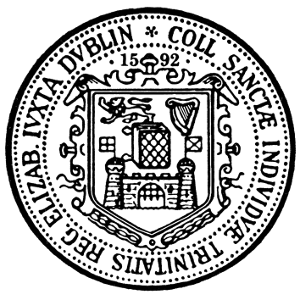
Walter Burley Griffin was an American architect and landscape architect. He is known for designing Canberra, Australia's capital city. He has been credited with the development of the L-shaped floor plan, the carport and an innovative use of reinforced concrete.

A rector is a senior official in an educational institution, and can refer to an official in either a university or a secondary school. Outside the English-speaking world the rector is often the most senior official in a university, whilst in the United States the most senior official is often referred to as President and in the United Kingdom and Commonwealth of Nations the most senior official is the Chancellor, whose office is primarily ceremonial and titular. The term and office of a rector can be referred to as a rectorate. The title is used widely in universities in Europe. and is very common in Latin American countries. It is also used in Brunei, Turkey, Russia, Pakistan, the Philippines, Indonesia, Israel and the Middle East. In the ancient universities of Scotland the office is sometimes referred to as Lord Rector, is the third most senior official, and is usually responsible for chairing the University Court.

Trinity College, officially the College of the Holy and Undivided Trinity of Queen Elizabeth near Dublin, is the sole constituent college of the University of Dublin, a research university located in Dublin, Ireland. The college was founded in 1592 by Queen Elizabeth I as the "mother" of a new university, modelled after the collegiate universities of Oxford and Cambridge, but unlike these other ancient universities, only one college was ever established; as such, the designations "Trinity College" and "University of Dublin" are usually synonymous for practical purposes. The college is legally incorporated by "the Provost, Fellows, Foundation Scholars and other members of the Board" as outlined by its founding charter. It is one of the seven ancient universities of Britain and Ireland, as well as Ireland's oldest surviving university. Trinity College is widely considered the most prestigious university in Ireland, in part due to its extensive history. In accordance with the formula of ad eundem gradum, a form of recognition that exists among the three universities, a graduate of Oxford, Cambridge, or Dublin can be conferred with the equivalent degree at either of the other two universities without further examination. Trinity College, Dublin is a sister college to St John's College, Cambridge and Oriel College, Oxford.

The University of Melbourne is a public research university located in Parkville, Melbourne, Australia. Founded in 1853, it is Australia's second oldest university and the oldest in Victoria. Melbourne's main campus is located in Parkville, an inner suburb north of the Melbourne central business district, with several other campuses located across Victoria.

RMIT University is an Australian public research university in Melbourne, Victoria.

Heythrop College, University of London, was a public university and the specialist philosophy and theology college of the University of London located in Kensington in London and the oldest constituent college of the federal University of London, being founded in 1614 by the Society of Jesus. Heythrop joined the University of London in 1971, maintaining its Roman Catholic links and ethos while offering an educational experience that respected all faiths and perspectives. Heythrop closed at the end of the 2017/18 academic year, with the final graduations taking place at the Senate House on 12 December 2018. It formally ceased operations and left the University of London on 31 January 2019.
Moore Theological College, otherwise known simply as Moore College, is the theological training seminary of the Diocese of Sydney in the Anglican Church of Australia. The college has a strong tradition of conservative evangelical theology with a strong emphasis on biblical languages, the use of primary sources and, critically, the importance of learning in community. It has developed three academic and ministry centres alongside its mainstream academic program, the Priscilla and Aquila Centre, which promotes women's ministry from a complementarian perspective, the Centre for Christian Living, which seeks to provide resources to the general Christian public for intelligent gospel engagement with the wider community, and the Centre for Ministry Development, which provides specialised continuing training and education for graduates and others involved in Christian ministry.

The Women's College is a residential college within the University of Sydney, in the suburb of Camperdown, Sydney, New South Wales, Australia. It was opened in 1892.
A provost is the senior academic administrator at many institutions of higher education in the United States and Canada, the equivalent of a deputy vice-chancellor at some institutions in the United Kingdom and Ireland, or a deputy (vice-)chancellor (academic) at most Australian universities.

Ridley College, formerly known as Ridley Melbourne, is a Christian theological college in the parklands of central Melbourne. Established in 1910, it has an evangelical foundation and outlook and is affiliated with the Australian College of Theology and the Anglican Church of Australia. The college offers on-campus and distance learning and provides training for various Christian ministries in a range of contexts.

St John's College, or the College of St John the Evangelist, is a residential college within the University of Sydney.

St Mary's College is a medium-sized residential college affiliated with the University of Melbourne. It was founded on and still practices the Catholic tradition.

In some universities in the United Kingdom and Ireland — particularly collegiate universities such as Oxford and Cambridge, as well as King's College London, Dublin University, Durham University, University of York, University of Kent and Lancaster University — students and the academic body are organised into a common room, or at Cambridge a combination room. This terminology has, in addition, been taken up in some universities in other English speaking nations. The terms JCR, MCR, and SCR are used by Harvard University, Yale University, Princeton University, and the University of Toronto.
A university council may be the executive body of a university's governance system, an advisory body to the university president, or something in between in authority.

Edmond and Corrigan is an Australian architectural firm based in Melbourne, Victoria, founded in the late 1970s by partners Maggie Edmond and Peter Corrigan, the firm's principals. The practice's work, both built and written, has been widely associated with the emergence of architectural postmodernism in Australia, an interest in suburbia and a search for an Australian architectural identity. Peter Corrigan taught design studios at RMIT University for over 30 years, until his death in December 2016.
Professor James Weirick is an Australian academic who is the Director of the Master of Urban Development and Design (MUDD) program at the University of New South Wales (UNSW), Sydney, Australia.

Catholic University School(C.U.S.) is a private school for boys in Dublin, Ireland. The school was founded in 1867 by St. John Henry Newman and Bartholomew Woodlock as a preparatory school for the Catholic University of Ireland, the predecessor to University College Dublin.
There are eleven residential colleges of the University of Queensland.

Albert Power SJ was a Roman Catholic Jesuit priest, academic and author. He was considered to be one of the best-known Jesuit priests in Australia and had the nickname "The Mighty Atom".





















